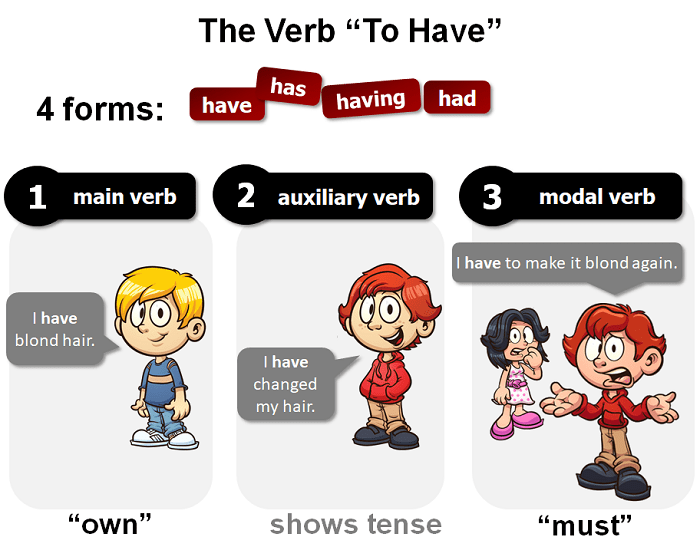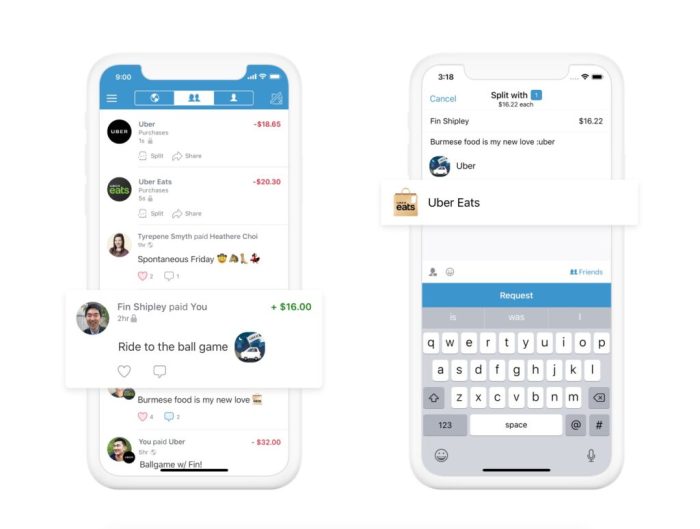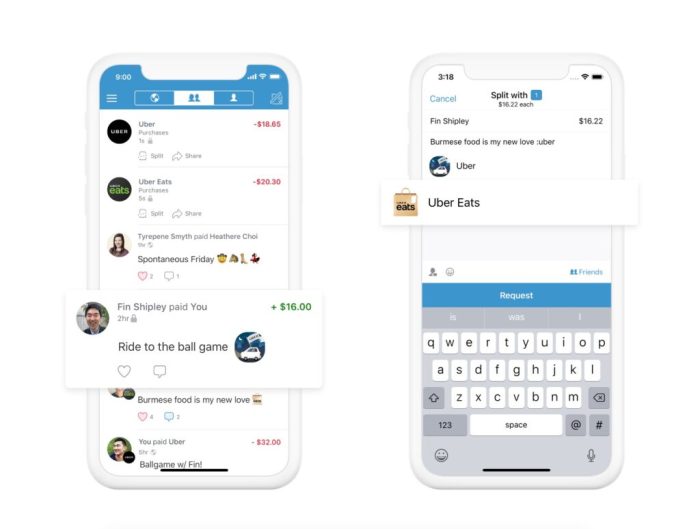Have a Sense of Humor – it’s more than just cracking jokes; it’s a powerful tool for connection, resilience, and personal growth. This exploration delves into the multifaceted world of humor, examining its definition, development, and impact across various aspects of life, from communication to relationships and even personal well-being. We’ll unpack different types of humor, explore cultural nuances, and discover practical strategies for cultivating a sharper, more effective sense of the funny.
From understanding the psychological functions of laughter to analyzing the evolution of humor in media, this guide offers a comprehensive perspective. We’ll analyze how humor can be used effectively in various contexts, from navigating social interactions to resolving conflicts and even boosting professional success. Prepare to discover the unexpected joy and practical benefits of embracing a sense of humor.
Defining Humor
Humor, a pervasive human experience, transcends cultures and languages, yet remains elusive to a precise definition. It’s a complex phenomenon intertwined with our cognitive abilities, social interactions, and cultural contexts. While laughter is often associated with humor, it’s not the sole indicator; humor can manifest in various forms, from witty banter to satirical commentary. Understanding its multifaceted nature requires exploring its psychological and social functions, alongside the rich tapestry of cultural variations in its appreciation.The appreciation of humor is intricately linked to the human capacity for cognitive flexibility.
Humor often arises from incongruity, the juxtaposition of unexpected or contrasting elements. This cognitive dissonance sparks a mental process that resolves the incongruity, leading to a feeling of amusement. Furthermore, humor plays a crucial role in social bonding and conflict resolution. It can be used to build rapport, diffuse tension, and establish common ground.
Types of Humor
Different types of humor exist, each employing distinct mechanisms to elicit amusement. Wit, often characterized by clever wordplay and unexpected turns of phrase, relies on verbal dexterity and intellectual agility. Satire, a more pointed form of humor, uses irony and exaggeration to critique societal norms, institutions, or individuals. Irony, a fundamental component of many humor styles, plays with expectations, presenting a situation or statement in a way that contrasts with its literal meaning.
These different types of humor cater to various tastes and sensibilities.
Psychological Functions of Humor
Humor serves a multitude of psychological functions, both individual and interpersonal. It can be a coping mechanism, helping individuals navigate stressful situations by providing a perspective shift. Humor can also foster social bonding by creating shared experiences and reinforcing group cohesion. It can also be a tool for conflict resolution, diffusing tension and promoting understanding. Moreover, humor can enhance emotional well-being by reducing stress and promoting positive affect.
Social Functions of Humor
Humor plays a significant role in social interactions. It can be used to build rapport, establish common ground, and create a sense of camaraderie among individuals. Humor can also be used as a tool for social critique, challenging norms and promoting social change. In addition, humor can facilitate communication by making interactions more engaging and memorable. It can also act as a social lubricant, easing tension and fostering positive relationships.
Cultural Variations in Humor Appreciation
Humor appreciation is deeply rooted in cultural values and norms. What is considered humorous in one culture might be offensive or incomprehensible in another. This is because humor often relies on shared cultural knowledge, social conventions, and expectations. Different cultural backgrounds influence the types of jokes, anecdotes, and social commentaries that are deemed funny.
Humor Styles Across Cultures
| Culture | Humor Style | Examples | Characteristics |
|---|---|---|---|
| American | Self-deprecating, observational, situational | Sarcastic remarks, jokes about everyday life, witty banter | Often relies on irony, absurdity, and relatable situations. |
| British | Witty, ironic, dry | Wordplay, understated humor, satire | Emphasizes intellectual cleverness and subtle nuances. |
| Japanese | Indirect, subtle, often based on social context | Humor that relies on shared cultural knowledge, indirect communication | Emphasis on maintaining harmony and avoiding direct confrontation. |
| Latin American | Exaggerated, physical, playful | Jokes involving slapstick, physical comedy, and over-the-top scenarios | Focus on creating a lighthearted and engaging atmosphere. |
Humor, a universal human experience, reflects the diverse and complex tapestry of human societies. It is a dynamic interplay of cognitive processes, social interactions, and cultural contexts.
Developing a Sense of Humor
Cultivating a sense of humor is a journey of self-discovery, requiring a willingness to embrace the absurd and find the funny in everyday life. It’s not about being the class clown, but rather about developing an appreciation for wit, irony, and the unexpected. A good sense of humor can significantly enhance our social interactions and emotional well-being.A keen sense of humor isn’t an innate gift; it’s a skill that can be honed and developed through conscious effort and practice.
It involves recognizing patterns, thinking outside the box, and having a willingness to see things from different perspectives. This process often involves confronting our own biases and preconceptions, which can be a powerful tool for personal growth.
Methods for Cultivating Humor
Developing a sense of humor involves embracing different approaches to understanding and expressing wit. Humor isn’t just about jokes; it’s about finding the amusing in everyday situations. This can be achieved through active listening, paying attention to incongruities, and practicing observational comedy. Reading widely, especially comedic works, can help develop a deeper understanding of humor’s various forms and techniques.
The Role of Empathy and Perspective-Taking in Humor
Empathy and perspective-taking are crucial components of humor. Understanding another person’s viewpoint allows us to appreciate the nuances of a joke or a funny situation. This understanding often lies in recognizing the shared human experience, the common struggles and triumphs that bring us together. By stepping into another’s shoes, we can better identify the comedic potential in a given situation.
The Importance of Self-Deprecation and Vulnerability in Humor
Self-deprecation, the ability to laugh at oneself, is a powerful tool in comedy. It demonstrates vulnerability and authenticity, making the humor more relatable and genuine. It acknowledges our imperfections, accepting them as part of what makes us human. Vulnerability is a key ingredient in humor, and embracing it allows for deeper connections and more meaningful interactions.
Examples of Comedic Approaches
Many individuals have shaped the landscape of comedy through their unique comedic approaches. Comedians like Jerry Seinfeld, known for observational humor, and Robin Williams, known for physical comedy and improvisation, have captivated audiences for decades. Their distinct styles and techniques have influenced generations of comedians. Others like Steve Martin, with his clever wordplay, and Tina Fey, with her sharp wit and satirical observations, exemplify the power of diverse comedic approaches.
Exercises to Enhance Comedic Timing and Delivery
Effective comedic timing and delivery are essential for impactful humor. Practicing these elements requires careful attention to both verbal and non-verbal cues.
| Exercise | Description |
|---|---|
| Mirror Practice | Practice delivering jokes or funny lines in front of a mirror, observing facial expressions and body language. |
| Improv Games | Engage in improvisation exercises to enhance spontaneity and adaptability in comedic delivery. |
| Audience Interaction | Practice performing for small groups or individuals, getting feedback on timing and comedic impact. |
| Record Yourself | Record yourself performing jokes or comedic sketches to analyze your delivery and identify areas for improvement. |
Humor in Communication
Humor, when used effectively, can significantly enhance communication. It can make information more memorable, build stronger connections, and create a more engaging experience for the receiver. However, its application needs careful consideration, as inappropriate humor can damage relationships and undermine the message’s impact. This section explores the multifaceted role of humor in various communication contexts.Humor acts as a powerful tool in communication, often serving to break down barriers and establish a more comfortable atmosphere.
It can make complex information more palatable, increasing the likelihood of its absorption and retention. A well-placed joke or witty remark can make a presentation more engaging, a meeting more productive, and a conversation more enjoyable.
Impact on Communication Effectiveness
Humor can significantly boost communication effectiveness by making information more memorable and engaging. When a message is delivered with a touch of humor, it often sticks in the receiver’s mind more readily than a purely factual presentation. This heightened engagement can lead to greater comprehension and retention of the information being conveyed. A humorous anecdote can help illustrate a point in a more relatable and memorable way than a purely logical explanation.
This impact on effectiveness depends critically on the appropriateness of the humor to the context.
Building Rapport and Trust
Humor can be a valuable tool for fostering rapport and trust in communication. When used appropriately, it can demonstrate a speaker’s approachability and create a sense of shared understanding. A well-timed joke or witty remark can create a positive and welcoming atmosphere, making the recipient feel more comfortable sharing their thoughts and ideas. This ease of communication can lead to deeper connections and stronger relationships.
However, humor should never be used to belittle or put down another person; its effectiveness depends on the context and the individuals involved.
Risks of Inappropriate Humor
Inappropriate humor can significantly damage communication effectiveness. It can alienate the audience, create offense, and undermine the message’s intended impact. In professional settings, jokes that are offensive, sexist, racist, or ageist can damage credibility and create a hostile work environment. Humor that is irrelevant to the topic at hand can also distract from the main message. Sensitivity to the audience and the context is crucial for ensuring that humor is used appropriately.
Having a good sense of humor is crucial, especially when dealing with life’s little imperfections. Like trying to cover up a bad wall – sometimes the best approach is to laugh at it and find a creative solution, like using wallpaper or paint to mask the flaws. Check out this helpful guide on Cover Up a Bad Wall for some great ideas.
Ultimately, a healthy sense of humor can make even the most challenging situations a little more bearable.
Understanding the cultural norms and sensitivities of the audience is also essential.
Humor in Formal and Informal Settings
Humor’s appropriateness varies significantly between formal and informal settings. In formal settings, such as business meetings or academic presentations, humor should be used judiciously and carefully. The focus should remain on conveying information effectively and maintaining professionalism. Inappropriate or overly casual humor can undermine the seriousness of the occasion and detract from the message. Informal settings, like social gatherings or casual conversations, allow for a wider range of humor, but even here, sensitivity to the audience and the context is vital.
The goal is to create a positive and enjoyable experience for all participants.
Use of Humor in Different Professional Fields
| Professional Field | Examples of Humor Use | Potential Risks |
|---|---|---|
| Sales | Using jokes or anecdotes to build rapport with clients, demonstrating approachability. | Inappropriate jokes can alienate clients and damage credibility. Humor should always be relevant to the product or service. |
| Marketing | Using humorous ads or social media campaigns to attract attention and create brand awareness. | Humor campaigns that are insensitive or offensive can damage the brand and alienate potential customers. |
| Teaching | Using stories or examples with a humorous twist to illustrate concepts and engage students. | Inappropriate jokes or humor that is not relevant to the lesson can disrupt the learning environment. |
| Customer Service | Using a lighthearted tone to address customer complaints, making the interaction more positive. | Humor should not be used to minimize or dismiss customer concerns. |
Humor and Relationships
Humor plays a crucial role in strengthening various relationships, from romantic partnerships to close friendships. It fosters connection, reduces stress, and creates shared experiences that enrich the bond between individuals. A shared sense of humor can be a powerful tool for navigating disagreements and building a deeper understanding of each other. This section explores the multifaceted ways humor contributes to healthy and fulfilling relationships.Humor can be a powerful adhesive in romantic relationships.
It allows partners to express themselves playfully, to connect on a deeper level, and to navigate challenges with a lighter touch. It fosters intimacy and creates a safe space for vulnerability.
Humor in Romantic Relationships
A healthy dose of humor in romantic relationships can significantly enhance the connection between partners. It creates a positive atmosphere, fostering laughter and shared joy. This shared experience strengthens the bond and builds a deeper understanding of each other’s personalities. A shared sense of humor can act as a buffer during disagreements, allowing partners to approach conflicts with a lighter heart and a greater ability to resolve issues constructively.
It’s important to note that humor should always be respectful and appropriate within the context of the relationship.
Humor in Friendships
Humor is an essential component of strong friendships. It allows friends to connect on a deeper level, to bond over shared experiences, and to express themselves in a relaxed and playful manner. A shared sense of humor strengthens the bond between friends and creates lasting memories. Humor can be used to navigate social situations and to provide a sense of camaraderie.
It’s crucial to understand that the humor used in friendships must be appropriate to the context and relationship dynamic.
Resolving Conflicts with Humor
Humor can be a powerful tool for resolving conflicts in relationships. It can diffuse tension, allow for a more objective perspective, and help to find common ground. When used effectively, humor can transform a potentially stressful situation into an opportunity for understanding and compromise. It’s important to remember that humor should not be used to belittle or insult the other person.
Instead, it should be used to lighten the mood and encourage a more productive dialogue.
Importance of Shared Humor
Shared humor is fundamental in building strong bonds between individuals. It creates a sense of camaraderie and strengthens the connection between people. It creates shared memories and experiences, reinforcing the sense of belonging and mutual understanding. This shared experience deepens the bond and fosters a more intimate connection.
Having a good sense of humor is key, especially when life throws curveballs. Sometimes, you just need a little levity, like booking a ski lodge getaway, just to be like you see in those travel ads, right? A place like ski lodge just to be like you can be a fantastic way to laugh at yourself and the ridiculousness of it all.
Finding the humor in everyday situations, big or small, is a powerful way to cope and stay positive.
Humor-Related Activities for Couples
| Activity | Description |
|---|---|
| Funny Movie Night | Choose a comedic film, prepare popcorn and drinks, and enjoy a fun evening of laughter. |
| Improvisation Games | Engage in improv games to encourage spontaneity, creativity, and playful interactions. |
| Stand-up Comedy Show | Attend a comedy show together and share your favorite jokes or moments from the performance. |
| Shared Joke Exchange | Create a list of your favorite jokes and share them with each other, adding your own personal spins or creating new ones together. |
| Funny Photo Album | Compile funny photos from your relationship and create a shared album or digital collection. |
Humor in Media and Popular Culture
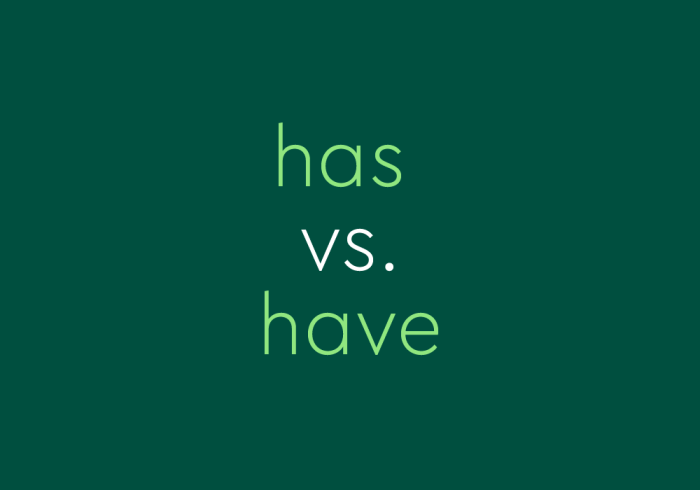
Humor, a fundamental human experience, thrives in the realm of media and popular culture. From the witty banter of sitcoms to the absurdist humor of animated films, it shapes our entertainment, influences our perspectives, and connects us on a shared level of laughter. This exploration delves into the diverse ways humor manifests in various media formats, examining its evolution, impact on audiences, and role in advertising.The interplay of humor and media is complex and multifaceted.
It transcends mere entertainment, often serving as a powerful tool for social commentary, cultural reflection, and even political engagement. By analyzing how humor is employed in different forms of media, we can gain insights into its effectiveness and the evolving tastes of audiences.
Examples of Humor in Popular Culture
Popular culture offers a wide spectrum of humor styles. Movies like “Monty Python and the Holy Grail” utilize absurd humor and slapstick comedy to create a unique cinematic experience. Sitcoms like “Friends” showcase witty banter and relatable situations, while animated films like “The Simpsons” often employ satire and observational humor. Music often uses wordplay and irony to create comedic effects, as seen in the lyrics and performances of artists like Weird Al Yankovic.
These examples illustrate the diverse ways humor is expressed across different media platforms.
Evolution of Humor in Different Media Formats
Humor’s expression has evolved alongside technological advancements and societal shifts. Early silent films relied heavily on physical comedy and visual gags, while talkies introduced verbal wit and character-driven humor. The rise of television expanded the possibilities, allowing for more complex storylines and nuanced comedic characters. Today, digital media and streaming platforms offer unprecedented opportunities for interactive and user-generated humor.
The evolution reflects the constant adaptation of humor to changing audiences and technological landscapes.
Impact of Humor on Audience Engagement
Humor plays a crucial role in audience engagement. It can create a sense of connection, making audiences feel understood and entertained. Successful comedic works often tap into universal human experiences, fostering a sense of shared understanding and relatability. Well-placed humor can maintain audience attention, making a show or film more memorable.
Use of Humor in Advertising
Humor is a powerful tool in advertising, capable of capturing attention and creating memorable impressions. It can make a product or service seem more approachable and relatable. However, the effectiveness of humor in advertising is context-dependent. The use of humor in advertising requires careful consideration of the target audience and the brand’s image to avoid misinterpretation or offense.
Humor Styles in Different Movie Genres
| Genre | Humor Style | Examples |
|---|---|---|
| Comedy | Witty banter, physical comedy, observational humor | “Bridesmaids,” “The Big Lebowski” |
| Action | Situational humor, slapstick, self-deprecating humor | “Deadpool,” “The Matrix” |
| Drama | Dark humor, irony, satire, subtle humor | “Eternal Sunshine of the Spotless Mind,” “Dr. Strangelove” |
| Sci-Fi | Absurdist humor, witty dialogue, philosophical humor | “Galaxy Quest,” “The Hitchhiker’s Guide to the Galaxy” |
The table above demonstrates a comparison of humor styles across various movie genres. The diverse applications highlight the adaptability of humor as a storytelling tool.
Humor and Personal Growth
Humor is more than just a lighthearted way to pass the time; it’s a powerful tool for personal growth. A healthy sense of humor can significantly impact our self-perception, resilience, and overall well-being. It can be a crucial element in navigating challenging situations and fostering positive relationships. This exploration delves into the multifaceted ways humor enhances personal development.Humor, when used constructively, acts as a buffer against life’s inevitable stressors.
It can shift perspectives, promote self-acceptance, and ultimately lead to a more fulfilling life. Cultivating a sense of humor is an investment in our emotional and mental well-being.
Having a good sense of humor can really brighten your day, no matter what’s going on. Sometimes, though, even the simplest things can be frustrating, like that annoying TV sound vibration that just won’t stop. Thankfully, there are solutions! Learning how to fix that irritating issue, like Stop TV Sound Vibration , can free up your mental space for laughter and joy.
And, honestly, a good laugh is the best medicine for anything, even a vibrating TV!
Enhancing Self-Esteem and Confidence
A good sense of humor can be a powerful confidence booster. By allowing us to laugh at ourselves and our imperfections, humor reduces self-criticism and fosters self-acceptance. This acceptance, in turn, strengthens self-esteem. When we can laugh at the occasional misstep or absurdity in our lives, we diminish the perceived significance of setbacks, promoting a more positive self-image.
Humor also allows us to connect with others on a more relatable level, creating opportunities for social interaction and building confidence in social settings.
Contributing to Resilience and Coping Mechanisms
Humor is a potent coping mechanism for dealing with stress and adversity. When faced with challenging situations, a healthy dose of humor can help us detach from the intensity of the moment and find perspective. This detachment allows for a more measured response, facilitating problem-solving and reducing emotional distress. Humor can also be a powerful tool in fostering resilience by allowing us to reframe difficult experiences in a more lighthearted way.
Improving Mental Well-being
Humor has a demonstrably positive impact on mental well-being. Studies have shown that laughter, an integral part of humor, releases endorphins, which have mood-boosting effects. This natural mood lift can help combat feelings of anxiety and depression, promoting a more positive outlook on life. Humor also provides a much-needed distraction from stressful thoughts, allowing for a temporary escape from negativity.
This temporary respite can significantly improve mental clarity and overall emotional well-being.
Strategies for Using Humor to Navigate Stressful Situations
Humor can be strategically employed to manage stress. A key strategy is to identify the humorous aspects of a stressful situation. This involves looking for the absurdity or irony in the event, allowing for a temporary shift in perspective. Practicing self-deprecating humor can also be effective, as it can help to diffuse tension and reduce feelings of self-importance.
Finally, surrounding yourself with people who share a similar sense of humor can create a supportive environment where laughter can be used as a shared coping mechanism.
Benefits of Humor for Stress Management
| Benefit | Explanation |
|---|---|
| Reduced Stress Hormones | Humor can help lower levels of stress hormones like cortisol, promoting relaxation and well-being. |
| Improved Mood | Laughter, a key component of humor, releases endorphins, natural mood boosters, that combat feelings of stress and anxiety. |
| Increased Perspective | Humor allows for a temporary detachment from the intensity of a stressful situation, offering a fresh perspective and potentially facilitating more effective problem-solving. |
| Enhanced Social Connection | Sharing humor with others can foster social support and create a sense of community, making stressful situations feel less isolating. |
| Increased Resilience | Humor helps to reframe stressful experiences, making them less daunting and building resilience against future challenges. |
Humor in Different Contexts
Humor, a powerful tool for connection and engagement, transcends personal boundaries and finds application in various facets of life. From the classroom to the boardroom, the courtroom, and the political arena, humor’s ability to lighten the mood, foster understanding, and even spark critical thought is undeniable. This exploration delves into how humor is leveraged in diverse settings, highlighting its nuanced impact.
Humor in Education
Humor can significantly enhance the learning experience. When used strategically, humor can capture attention, reduce stress, and create a more engaging environment. Teachers who incorporate appropriate humor can foster a positive classroom atmosphere, boosting student motivation and comprehension. Examples range from using relatable anecdotes to employing witty illustrations that clarify complex concepts.
- Humor can improve student engagement and motivation by making learning more enjoyable and less daunting.
- Appropriate humor can help students retain information better by associating concepts with memorable experiences.
- A lighthearted approach can build a sense of camaraderie and trust between students and teachers.
- Humor can reduce anxiety and fear surrounding difficult topics, allowing for a more open and receptive learning environment.
Humor in Business Settings
Humor can be a powerful tool in business, capable of building rapport, reducing stress, and boosting team morale. When used appropriately, it can foster a more collaborative and innovative work environment. However, cultural nuances and the specific context of the business interaction are crucial factors to consider.
- Humor can enhance communication by making information more accessible and memorable.
- A well-placed joke can defuse tense situations and promote better conflict resolution.
- Humor can help build stronger relationships within teams, fostering trust and cooperation.
- Using humor in presentations can help capture attention and make the message more memorable.
Humor in Therapy and Counseling
Humor can be a valuable tool in therapeutic settings, serving to reduce anxiety, build rapport, and promote emotional processing. A therapist’s ability to use humor strategically can create a safe and comfortable space for clients to explore their feelings and experiences. The key lies in understanding the client’s unique context and cultural background.
- Humor can help clients feel less defensive and more open to exploring their emotions.
- It can create a safe space for clients to engage in self-reflection, facilitating emotional growth.
- Humor can serve as a distraction from painful memories or experiences, potentially easing the client’s distress.
- It can demonstrate empathy and understanding, fostering a positive therapeutic relationship.
Humor in Political Discourse
Humor in political discourse can be a double-edged sword. While it can capture attention, increase engagement, and even help sway public opinion, it can also be misused or misconstrued. Political humor needs to be carefully crafted to avoid alienating potential voters or undermining the seriousness of political issues.
- Political humor can be a powerful tool for satire, holding political figures and institutions accountable.
- It can be a way to engage the public and encourage critical thinking about political issues.
- However, inappropriate or offensive humor can alienate voters and diminish the credibility of the speaker.
- The effectiveness of political humor depends greatly on the specific audience and the context of the political climate.
Different Ways Humor is Used in Different Fields, Have a Sense of Humor
| Field | Examples of Humor Use |
|---|---|
| Education | Relatable anecdotes, witty illustrations, lighthearted games |
| Business | Team-building activities, jokes in presentations, witty email responses |
| Therapy | Using analogies, asking thought-provoking questions, lighthearted anecdotes |
| Political Discourse | Satire, witty remarks, humorous social media posts |
The Impact of Humor on Others
Humor, a powerful tool, transcends mere amusement. It possesses the remarkable ability to connect people, foster positive relationships, and even effect meaningful social change. Beyond simple entertainment, humor can be a catalyst for growth, healing, and a more compassionate world. It’s a vital component in navigating the complexities of human interaction.Humor’s capacity to uplift and improve well-being is significant.
It can create a sense of shared experience and camaraderie, strengthening bonds between individuals and groups. A well-placed joke or witty remark can lighten the mood, ease tension, and promote a more positive atmosphere.
Humor and Improved Well-being
Humor has a demonstrably positive effect on mental and emotional health. Studies have shown that laughter, often a byproduct of humor, releases endorphins, which have mood-boosting effects. This physiological response can help reduce stress, anxiety, and even pain. Moreover, shared laughter strengthens social connections and creates a sense of belonging, which are essential for overall well-being. Humor can provide an escape from the daily grind and offer a perspective that can help people cope with difficult situations.
Humor as a Motivational Force
Humor can be a powerful tool for inspiration and motivation. A lighthearted approach can make challenging tasks seem less daunting, and humor can encourage perseverance in the face of adversity. Think of comedians who use humor to critique social norms or inspire change. By using humor, they can often make a point more effectively and create a more receptive audience.
Humor and Social Change
Humor has played a significant role in social movements throughout history. From satirical cartoons in political campaigns to stand-up routines challenging societal norms, humor can effectively raise awareness and spark conversations about critical issues. For example, comedic performances that highlight inequalities and injustices often resonate more deeply than purely factual presentations. They can humanize the struggles of marginalized groups and encourage empathy and understanding.
The effectiveness of humor in social change depends on the context, target audience, and delivery.
Humor in Conflict Resolution
Humor can be a surprisingly effective tool in conflict resolution. It can diffuse tension, create common ground, and encourage empathy between conflicting parties. By using humor to de-escalate tension, individuals can often find common ground and work towards a mutually beneficial resolution. In some cases, humor can provide a safe space for expressing differing viewpoints without the pressure of serious confrontation.
Positive and Negative Effects of Humor on Social Dynamics
| Aspect | Positive Effects | Negative Effects |
|---|---|---|
| Social Connection | Humor fosters camaraderie, strengthens bonds, and creates a sense of belonging. | Inappropriate or insensitive humor can alienate others, create conflict, and damage relationships. |
| Conflict Resolution | Humor can diffuse tension, encourage empathy, and facilitate compromise. | Sarcasm or mockery can escalate conflicts and hinder productive dialogue. |
| Social Change | Humor can raise awareness, challenge norms, and inspire social action. | Humor can be misinterpreted, offensive, or fail to resonate with the intended audience. |
| Well-being | Humor can reduce stress, improve mood, and promote overall well-being. | Excessive or inappropriate humor can lead to a lack of seriousness, creating discomfort or misunderstandings. |
Last Recap: Have A Sense Of Humor
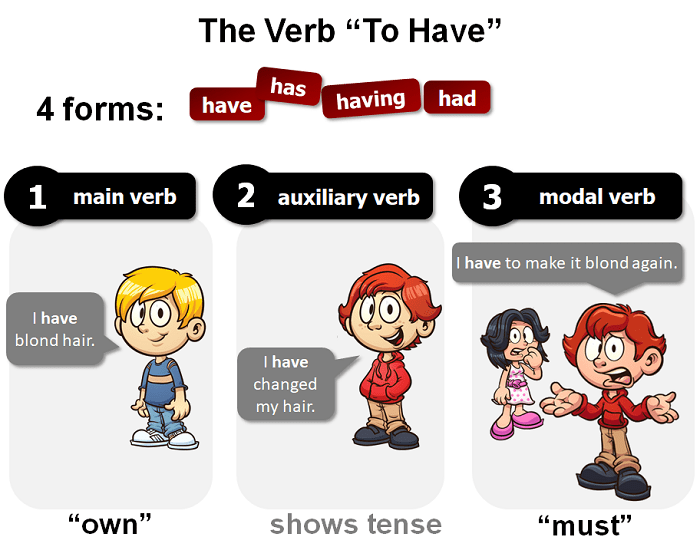
In conclusion, a sense of humor is a valuable asset that enhances communication, strengthens relationships, and fosters personal growth. By understanding the different facets of humor, from its definition and cultural variations to its applications in various contexts, we can appreciate its power and learn how to harness it effectively. Embracing humor, in all its forms, is a journey of self-discovery and connection.
Cultivating a sense of humor isn’t just about making others laugh; it’s about enriching our own lives and the lives of those around us.
